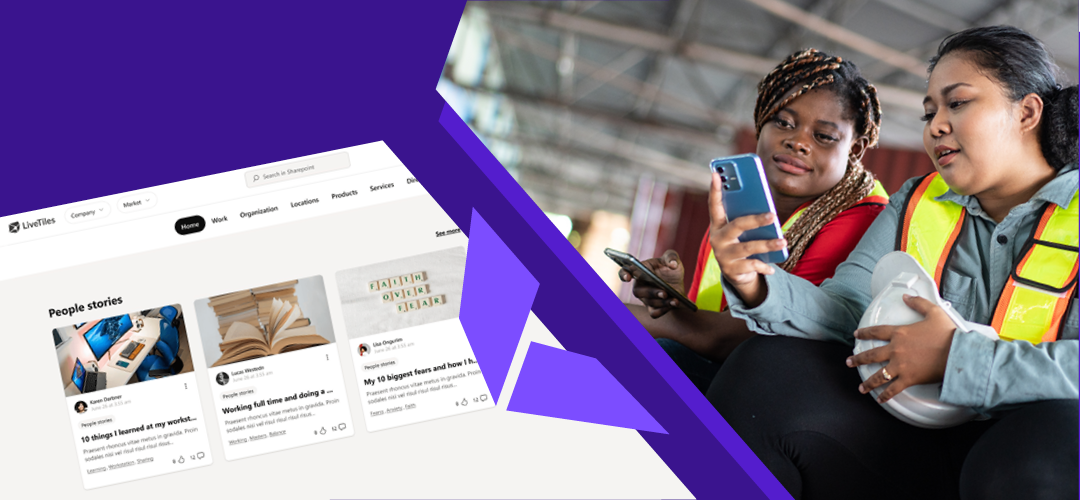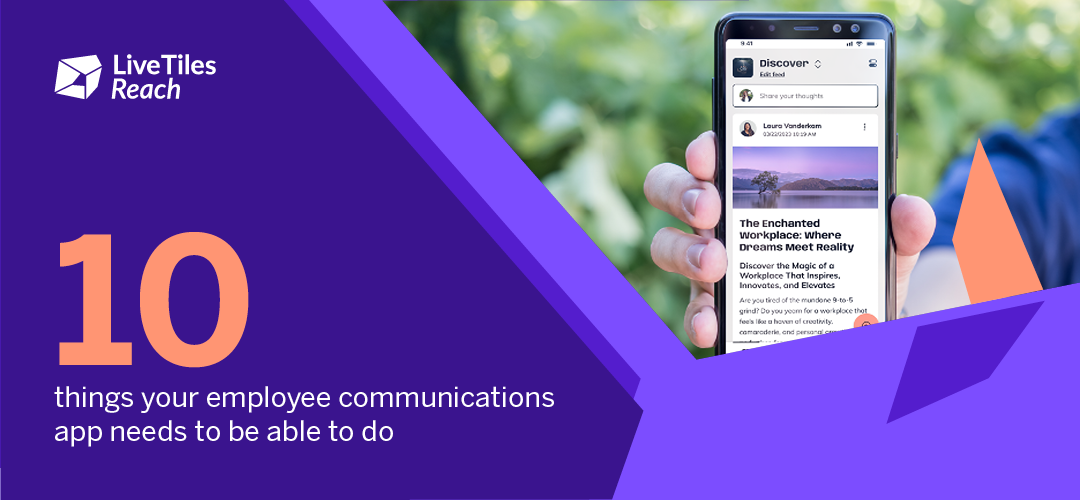Internal communications within companies is rapidly evolving. Intranet’s are morphing into employee experience tools, where the hybrid workplace is now the norm.
In the early days, an intranet was basically just a private, password-protected website for your employees. These days, intranets have completely overhauled the way we conduct business. Intranets are deeply embedded in our workflows, touching every aspect of our communications, project collaboration, and connectivity. What was once a simple network is now a well-orchestrated combination of technology, process and people — the ecosystem of today’s employee experience.
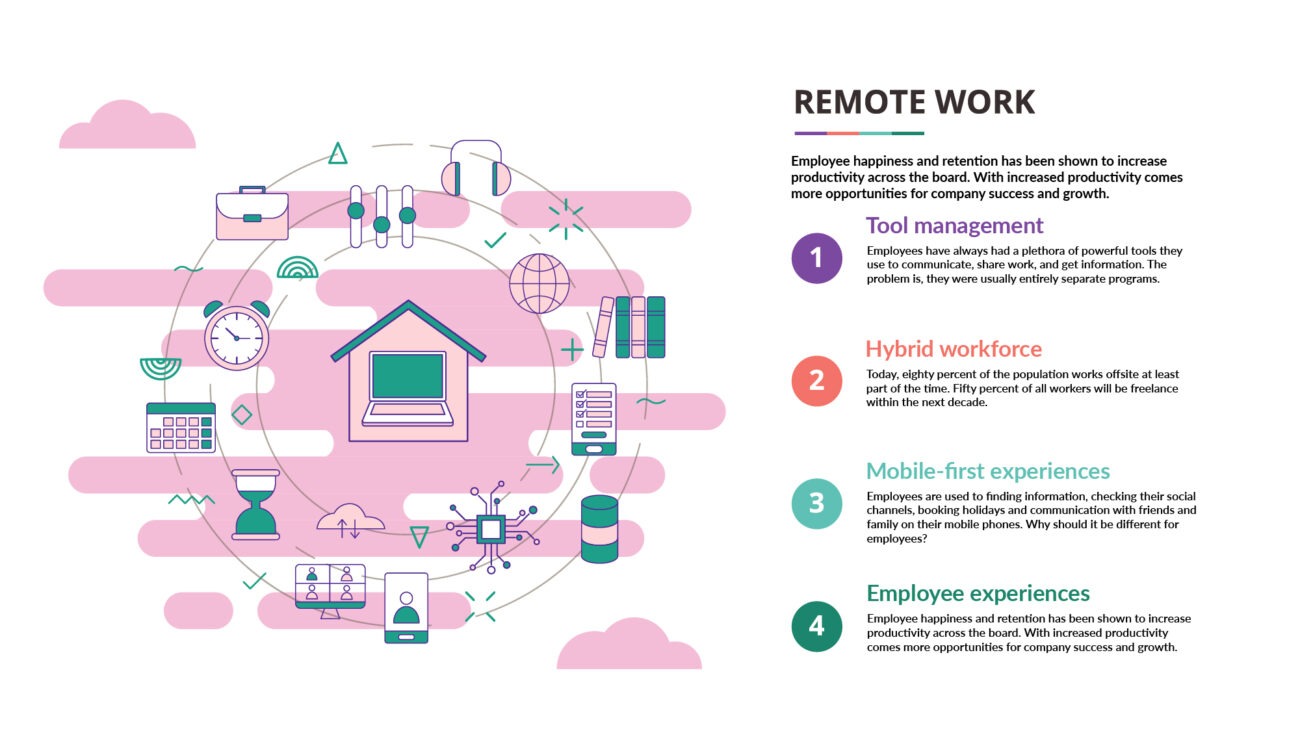
What spurred the evolution of modern employee experiences?
Employee experiences have taken a leap in how they contribute to organizational efficiency and consistency. We are in the midst of a massive shift in what was the normal working environment, with remote working a daily reality for most workers. This is evident in five main ways. They are unifying workflows across companies, opening up full mobility to workers, and built largely on Cloud-based platforms, they are more nimble. This allows them to more easily adopt the latest apps, tools, and programs.
(1) Offices are rapidly becoming more remote.
Offices are becoming increasingly more remote. Today, eighty percent of the population works offsite at least part of the time. Fifty percent of all workers will be freelance within the next decade. Today’s intranets dramatically increase workforce agility, enabling people to work ‘side-by-side’ no matter where they are in the world. Teams connect to the same portal and gain access to all core business applications, messaging systems, social media, and virtual meetings. Essentially, your office materializes wherever you want to connect.
(2) The tool management problem.
Employees have always had a plethora of powerful tools they use to communicate, share work, and get information. The problem is, they were usually entirely separate programs. In one morning, you would email a proposal through Outlook, chat with a team member on Slack, access contact information through Saleforce.com, schedule a meeting through WebEx, and so on. In addition to their stand-alone functionality, modern intranets integrate with popular apps, tools, and programs into the network. This is not only more convenient (no need to remember 10 passwords), it’s also an immensely valuable way to capture and archive the project knowledge being exchanged by teams.

(3) Intranets need to be flexible and include mobile-first options
Intranets are gaining ground because they are less IT-controlled and more flexible, people-driven, focused on modern workstyles. Coworkers, clients, suppliers, and partners are increasingly interacting in a more casual way. The younger generation often bring this casual interaction into the workplace. There are endless new tools Skype, Slack, Zoom, Instagram, etc coming out all the time. Cloud-based, modern intranets are designed to be highly adaptable to these buzzy new programs, apps, or tools.
(4) Creating mobile-first employee experiences
Employees are used to finding information, checking their social channels, booking holidays and communication with friends and family on their mobile phones. Why should it be different for employees? The days of turning your phone off while being at work, or in the office are long gone. Mobile phones are now an essential part of free time and people’s working lives. By providing mobile-first employee experiences you are giving people a user experience familiar to them and encouraging them to interact with your company tools at the same time.
(5) Forward thinking companies are concentrating on the evolution of the employee experience
Employee happiness and retention has been shown to increase productivity across the board. With increased productivity comes more opportunities for company success and growth. It has been noted that hiring a new employee takes much more time than finding, hiring and onboarding new employees. By valuing your current employees both for their contributions at work and the energy they bring to your company culture, you provide a workplace everybody wants to be a part of.
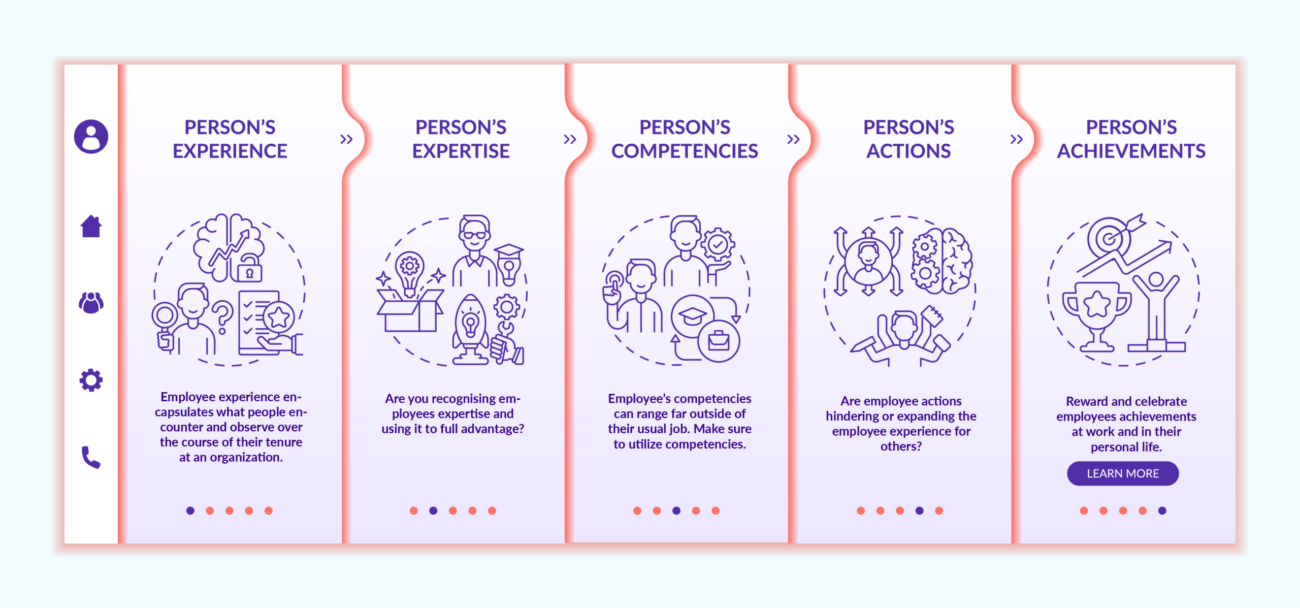
How do better employee experiences help productivity?
Imagine a medical device conference where Bob the salesperson meets Jane the hospital executive on the floor. Bob knows that Jane works at a huge medical center that his marketing team has extensively researched. Jane wants to hear about Bob’s line or products… now. He has just minutes to prepare for this high stakes meeting, and he only has his smartphone handy.
Through his Intranet-connected mobile app, Bob can;
- a) message everyone on the sales and marketing team for a (lightning quick) hospital dossier
- b) access all company proposals that match keywords or names,
- c) fire up an instant, virtual meeting to pull an expert onto the sales call.
This type of one-touch, instant information exchange was just not possible 20, or even 10 years ago. Giving employees access to information, colleagues and tools is part of creating an unforgettable employee experience.
The history and evolution of intranets as a basis for employee experiences
Companies are always concerned with placing corporate information on networks that interface outside their Local Area Network (LAN). This is why the private intranet has taken much longer to mature than the public Internet. They have evolved in three basic phases:
Today’s intranets use messaging servers to streamline and secure all internal communications. Documentation, information, and other company resources are archived and searchable from anywhere. Remote and internet teams can collaborate on files and access business applications. And most recently, intranets are embedded with process specific, Artificial Intelligence (AI) driven tools – often for HR or skill-building purposes.

The difference between an intranet and extranet as a precursor
Extranets are extensions of your intranet. They are an area of your network that is private, giving controlled access to customers, partners, vendors, suppliers and other businesses. Essentially, it a place non-employees can interact with your network in a very specific way, without granting full access to your company’s network. Intranets, on the other hand, generally provide full access (to employees) of all collaborative, communication, and information sharing functions. This is generally where past employee experiences begin. Instead of creating an outdated intranet, that is hard to use, or created in the nineteen eighties, you could look at a hybrid intranet and employee app. Give employees access to what they need, in the ways they know. For example, on their smart phones. Creating employee experiences should be fluid, intuitive and easy for the end-user.

Corporate intellectual property security on employee apps?
With increasing remote access to the network, IT oversight has also evolved. While intranets and employee apps are typically safe, security concerns still prevail. A major issue is workers using personal mobile devices or laptops to log on. Companies are adopting secure extranet access technology such as SSL, VPN (Virtual Private Network), and firewall software to protect the network. Also, careful organizations direct remote workers to have the latest anti-virus software or even a personal firewall on all devices being used to access the intranet. And of course, established procedures, clearly defined ownership, and escalation channels are also critical.
Cloud-based intranets actually have greater oversight – more guards at the watchtower – than in-house networks. Cloud providers are constantly on the prowl for emerging vulnerabilities or new viruses. And they get very specific. They can determine precisely how many breaches per month a company is experiencing.
Companies regularly contend with hacking, viruses, and the particularly pernicious, ransomware attacks. It’s a full-time job to stay on top of it.
Microsoft Teams has introduced security measures aimed at a mobile, hybrid workforce. Heightened online security combined with continuously evolving employee apps that include intranet functionality serves to provide tools for unforgettable employee experiences.
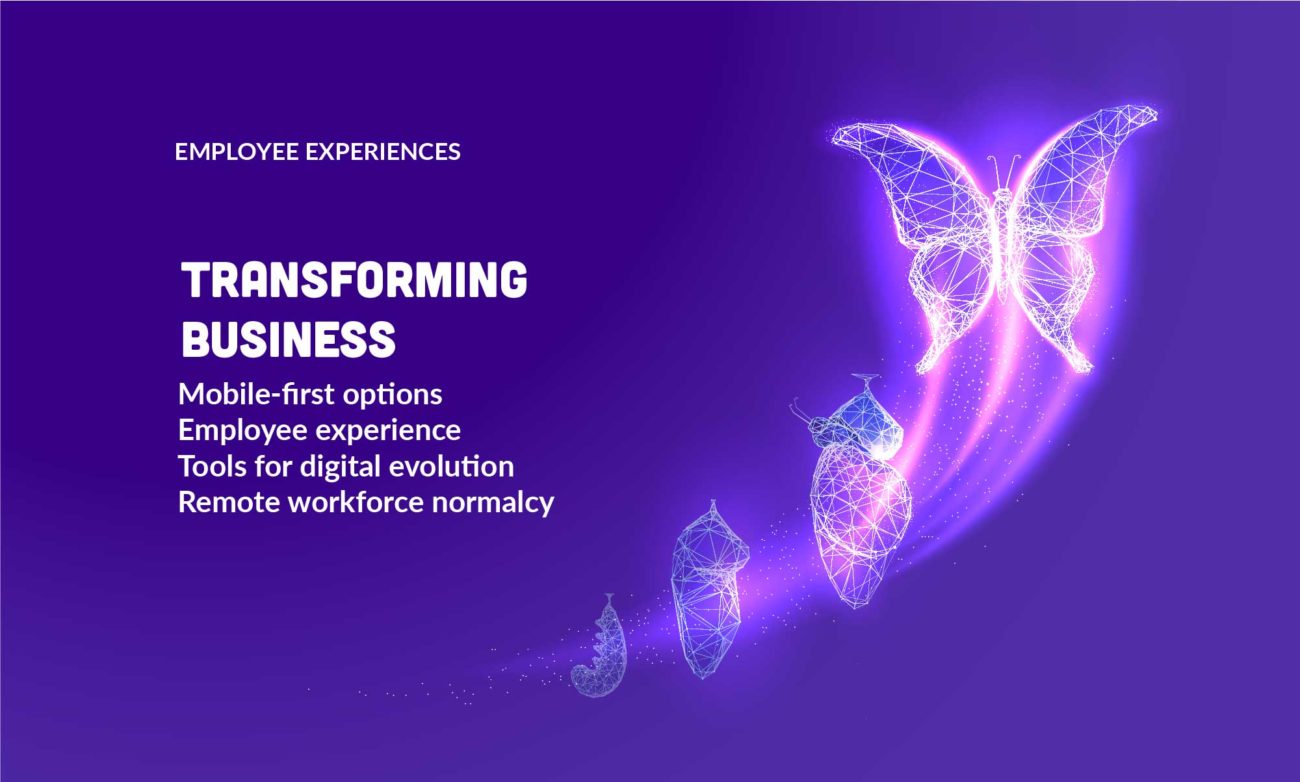
Three Key Ways Intranets are Transforming Business
Mobile usage: The modern intranet is entirely built to unify workflows and support the work-from-anywhere, digital workplace. Intranet mobile apps can be accessed from most iOS or Android devices. All this without the time, cost and risks associated with customized cross-platform app development.
AI-driven chatbots: Ask any HR person, and they will tell you that they have to answer the same questions over and over again. Intelligent programs such as chatbots are cutting way down on this unnecessary repetition. Smart, specific answers can automate a large portion (or even all) of the questions employees have about benefits information, company policies, or educational content. Chatbots, programmed with self-serve, detailed, and company-specific materials, can save everyone time.
Analytics gauge productivity: Given the complexity and fluidity of modern intranets, it is hugely helpful to see how the network is being used in real time. With programs, apps, messaging, and conferencing together on the network, companies can actually get a real snapshot of their entire working ecosystem. Analytics on the intranet provides instant, real-time, usage of specific departments, geolocations, device types, and page interactions. If a company has adopted a tool that is largely being ignored, they will know instantly. If workflows are stymied between departments, companies will see it. And, if new pathways are being forged — leading to valuable knowledge sharing, this will be revealed as well.
Intranet and employee app provider LiveTiles, provides on-the-fly intelligence, offering data that will save companies money on costly redesign or development projects.
Intranets have grown up and are playing a vital role in the productivity of today’s organizations. If you are ready to learn more about how an Intelligent intranet solution can transform your organization, Get in touch with LiveTiles today and request a demo.


